Delays, blowouts, spin, finger-pointing, legal bouts ... what can we expect when the new $2.3bn RAH finally opens?
DELAYS, blowouts, spin, finger-pointing, legal bouts ... the $2.3 billion new RAH has become an embarrassment for the Weatherill government. So what can we expect when it finally does open?
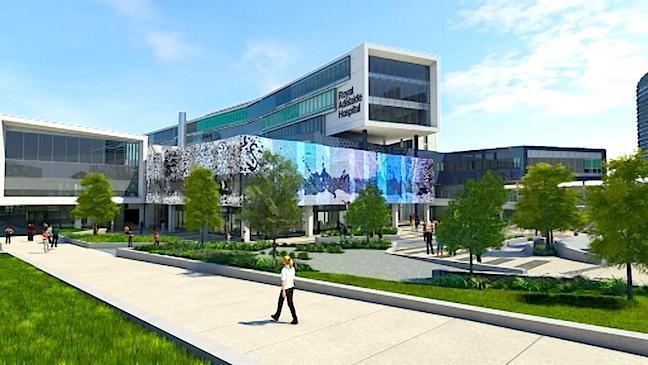
FROM the outside it looks like more than $2.3 billion but what dwells within remains a mystery.
The monolithic new Royal Adelaide Hospital currently sits dormant on the western end of North Tce, seemingly finished to the untrained eyes of thousands of motorists, train commuters and pedestrians who pass it each day.
But after a decade of planning and almost a year after it was first slated to open, the single-most expensive piece of infrastructure in the state’s history is yet to treat a single patient. Amid ferocious legal disputes, and a running joke that more high-priced QCs now work on the project than builders, even the heads of key medical unions have been locked out of the site and remain in the dark about when the most expensive building project in South Australia will finally be in operation.
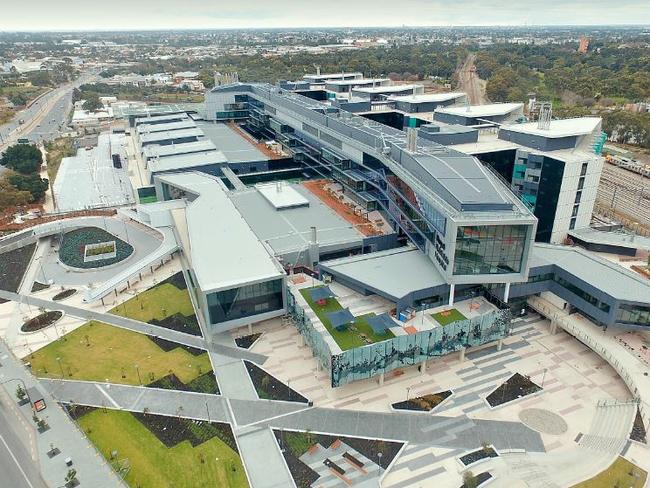
In backrooms and courtrooms, the State Government and builders have been playing a high-stakes poker game amid dangers of a $5 billion legal suit against taxpayers if Health Minister Jack Snelling follows through on threats to tear up the contract over delays and safety fears.
Much of that argument, too, like the hospital, has been obscured from public view.
For a 15-year-old Labor government struggling for good news, the next few months could be make or break as it closes in on a deal to end legal threats and get on with the big move.
Today, the Sunday Mail goes inside the $2.3 billion project for a glimpse of what patients can expect and looks at the tortured politics of building a new world-class hospital in Adelaide.
Tight from the very start, things with the hospital didn’t quite go to plan.
Cabinet had for months been secretly mulling a big idea it thought would be a political masterstroke. The Royal Adelaide Hospital, more than 150 years old, was ageing badly while a large tract of land next door to the city railway station was a vacant eyesore.
Labor was settling into a second term after a crushing election victory a year earlier and flush with cash as soaring house prices and the GST boom sent tax returns through the ceiling.
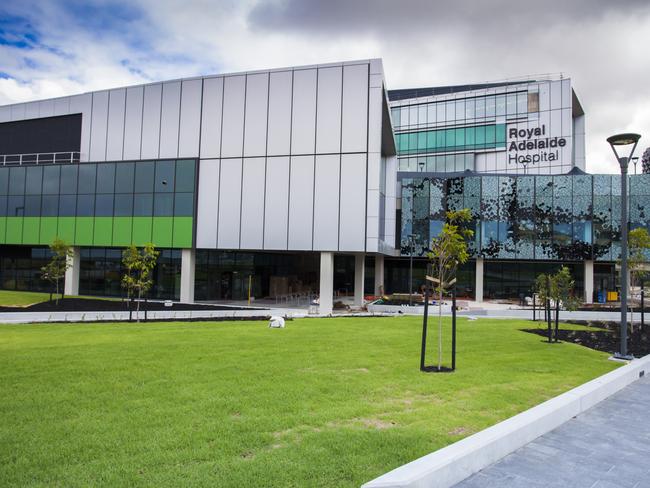
A new hospital on the railyards, named after popular SA Governor Marjorie Jackson-Nelson, would become the centrepiece announcement of the 2007 State Budget. What was not to love?
But even the big unveiling spun out of government control. On May 24, 2007, SA woke to an Advertiser front page headline “$1.5bn plan to build a new RAH”.
From there came four years of furious political argument, and a near-miss for Labor at the 2010 election before the point of no return was reached and a contract signed with consortium SA Health Partnership.
The physical form of the building has been a point of heated dispute since before pen hit paper.
During the sales campaign for building a new hospital, the Government played up the signs of decay at the “rabbit warren” that the old RAH had become. After more than a century of tack-owns and additions, it said, the state had to start anew with the best new technology on offer.
Latest pictures, many of which have never before been published, show operating theatres, reception areas and private rooms that appear pristine and ready to receive patients — but still the hospital stands empty with no opening date.
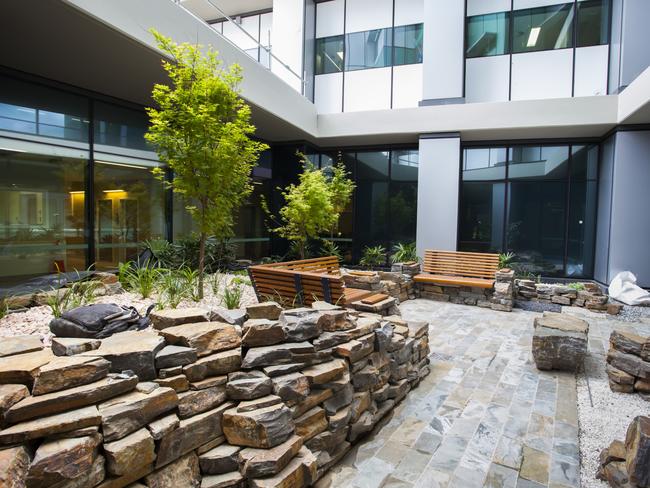
SA Salaried Medical Officers’ Association President David Pope says he is deeply worried the new hospital doesn’t have enough room for all specialist outpatient services that need to be moved over, and parts of the old one are going to have to stay open indefinitely.
“I think that’s absolutely going to be required,” he said.
“When you look at what the population needs, what the current RAH provides and what you can do at the new RAH, they don’t line up. Something has got to give, and it can’t be the services.”
Dr Pope says he hasn’t been allowed on site for close to two years.
“Physically the hospital is very large, but there’s a lot of space taken up by the single-room concept and also the procedural areas like operating theatres. They are absolutely enormous, and there’s a lot of space taken up by shops and things, but very little for clinics themselves.”
SA Health’s promotional material boasts that the new hospital will offer “100 per cent overnight single patient rooms” including private ensuites and access to outdoor areas and internal gardens.
Australian Nursing and Midwifery Federation SA secretary Elizabeth Dabars — who also hasn’t been allowed to tour the hospital for more than a year — says single rooms ensure privacy but raise the risk vulnerable patients won’t have adequate oversight.
In hospitals with traditional multi-bed wards, fewer nurses can check more patients. Patients also keep an eye on each other and can speedily raise alarm in an emergency.
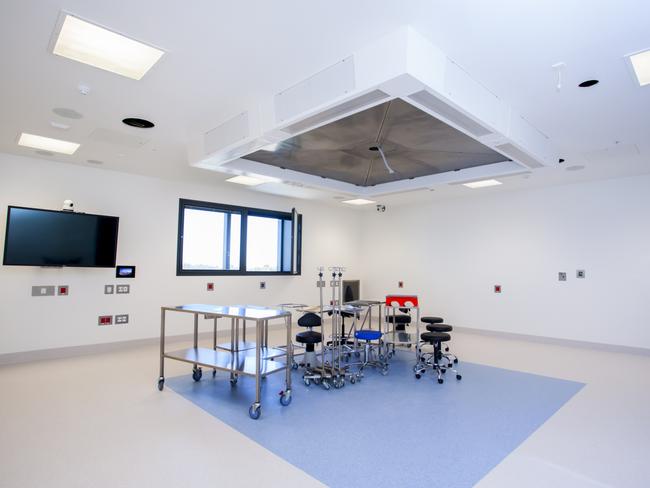
“The single rooms are private, so that’s a plus for infection control and dignity and keeping things quiet,” Ms Dabars said. “But the international research is now showing it can be very costly for staffing and reduces the functioning of clinical teams, so there are negatives attached to the single-room arrangement even through it was always heralded as a major positive.”
Other question marks surround SA Health’s trouble-plagued new electronic patient records system, EPAS.
Medical professionals say EPAS is far from ready to form the foundation of the hospital’s operations.
They say it is extremely risky to entrust so many key elements of patient care — from monitoring of vital signs to scheduling of follow-up tests — to a fledgling system that has proven complicated and confusing to operate.
A messy transition period between the current paper records system and EPAS will likely be required, but there is no space allocated in the new hospital for the storage of paper records.
A frustrated Health Minister Jack Snelling got to his feet in State Parliament on March 22 last year to confirm, as jeers flew across the chamber, yet another delay.

A hospital which was first supposed to open in April would now be pushed back until at least November, and he couldn’t even really say that with much certainty. That day, Mr Snelling also offered the first public signs of a bitter dispute raging behind closed doors with the builders.
“I don’t have an enormous amount of confidence in the information they’re giving us,” he said.
It would turn out he was putting it lightly. By the end of the year, the Government and SAHP were facing off in the Supreme Court and their working relationship had been shredded.
There are two radically different views of what went down.
The Government, under mounting political pressure over failure to open the hospital, lays all blame at the feet of SAHP. It says the consortium, which subcontracted the building work out to a joint venture of Hansen Yuncken Leighton Contractors, was not only chronically behind time but evasive and dishonest about its plans to get the doors open as soon as possible.
The Government also argued it was not getting what it paid for, with particular concerns about a water-based cooling system which had previously busted and could do again.
Mr Snelling’s leverage the whole time was a seemingly iron-clad contract written by his predecessor that the usually conservative mob at Crown Law insisted gave him the whip hand.

Their advice was that delays gave the Government rights to rip up the contract at just about any time, a move that would financially destroy SAHP. With outside counsel from infamously aggressive legal strategist Skip Lipman, the Government bet it could make SAHP bend.
Sources close to the consortium, however, felt they had done a deal with pirates.
As Mr Snelling lawyered up, and key state personnel working on the project were moved on, they started to sense the Government had a bad case of buyers’ remorse. “They bought a Rolls-Royce, and are now baulking at the price tag,” one industry source said at the time.
Under the complex contract arrangement, struck when Olympic Dam was still on the cards, taxpayers were to hand over $400 million per year. That functioned as a mortgage repayment on the build, as well as covering maintenance and other services including IT, food and cleaning.
Industry sources formed a firm view by late last year that the Government was engaged in a classic “shakedown”, the kind of which they had never experienced on another major project.

“There’s always small things on a big project that go wrong, but everywhere else the client and builder work together to get it finished,” one industry source said in November. “It’s like they actually don’t want to move in. We’re starting to think they are crazy enough to terminate.”
In total, the industry geared up for $5 billion in countersuits if the contract was torn up.
It is now likely a divorce agreement will be reached in coming days, after a high-powered meeting of state ministers and investment bankers in Adelaide just over a week ago.
Amid all the uncertainty, the biggest question mark remains an opening date.
There had been hopes of a shift from one end of North Tce to the other in June, and plans are still being prepared for a move in the first half of 2017.
Mr Snelling this week told the Sunday Mail the entire network of city hospitals would have to be mobilised as services were shifted during a critical two-month transition period.
Like a department store holding a closing down sale, the old RAH will have to run down its number of daily patients from the around 600 it cares for now to about half that.
Other hospitals as far away as Mount Barker and Victor Harbor will have to take on extra demand in the month leading up, before machines and patients change RAHs over a week.
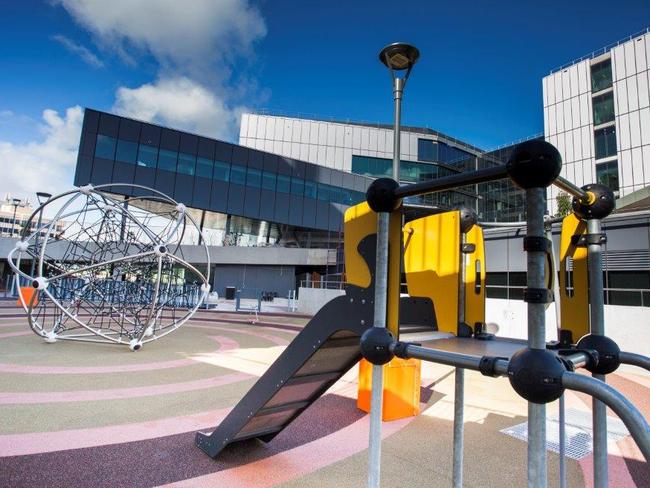
“Obviously the fewer number of patients you can move the safer it’s going to be,” Mr Snelling said. “In the month or two leading up to the move, we’ll reduce the number of RAH patients by moving them to other hospitals. Where surgery can be safely put off, we will be doing that too.”
There is also a contentious decision to be made over timing. After ruling out a move during the peak-demand winter flu season last year, Mr Snelling says that is now back on the table.
“If we have another late flu season, like we did in 2016, then that does give you greater scope — but that bottom line will be that whatever we do will be safe,” he said.
Both Dr Pope and Prof Dabars have raised serious concerns about a winter move.
“It’s much, much more dangerous,” Dr Pope said. “It’s really about whether the Government is willing to accept putting the public at that much higher risk. It’s not what they are elected for, but they might, mostly I think because of the timings with the election in March 2018.”
When Labor found itself returned to power in 2014, and with the new Federal Government determined to cut spending, Mr Snelling took a decision Sir Humphrey Appleby would call “courageous”. A former treasurer, he saw the state had created a health system with the highest costs in the nation but some of its worst results, and pledged to transform it.

The politics have been savage. An Advertiser-Galaxy poll in September found 64 per cent of respondents were opposed to Transforming Health. Labor badly needs a win on the new RAH.
No one in the Government is optimistic enough to claim there won’t be any teething problems.
Staff have to be trained in a new system, switching from paper to electronic patient records still poses major problems and the state’s entire health network is going to be reoriented.
But Mr Snelling believes there will be an “Adelaide Oval effect” when the hospital opens, as critics fall away and punters marvel at plush single rooms and robots delivering food.
Asked what the hospital now looks like on the inside, one senior industry figure’s eyebrows hit the ceiling as he leaned across the table and said: “Mate, this thing is seriously the duck’s nuts”.
“People will be blown away,” he said. “It’s all top of the line, but comes at a cost to match.”
It’s been the one consistent point of agreement between the parties, as they argue all else.
Mr Snelling said he was confident the pain would pass when the doors are finally flung open.
“I’m in absolutely no doubt it’s going to be huge,” he said. “This is going to be a positive for the Government, and the Liberal Party will look foolish for having opposed it for so long.
“These sorts of projects aren’t easy. But just about anything worth doing is difficult.”
